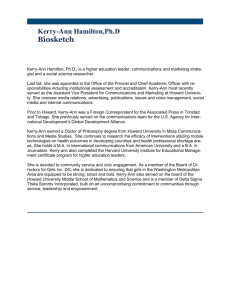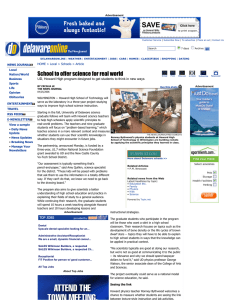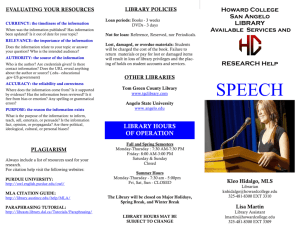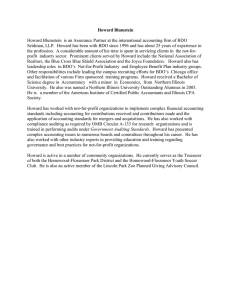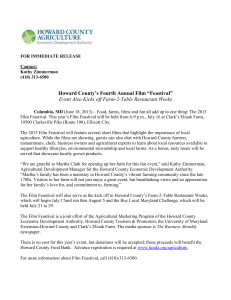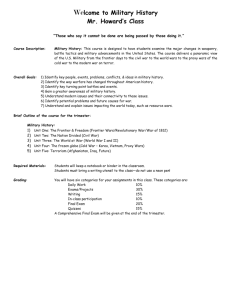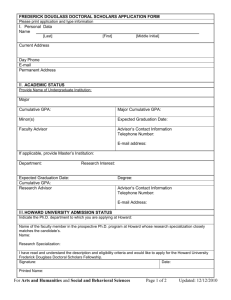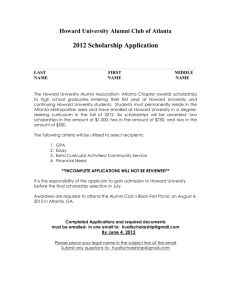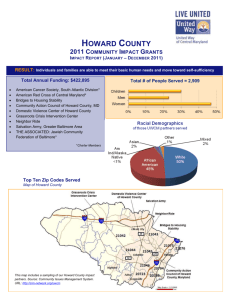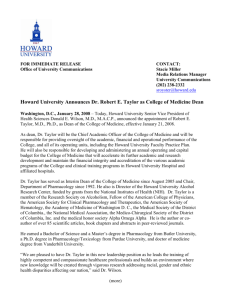What does CAE / IAE Certification Mean?
advertisement
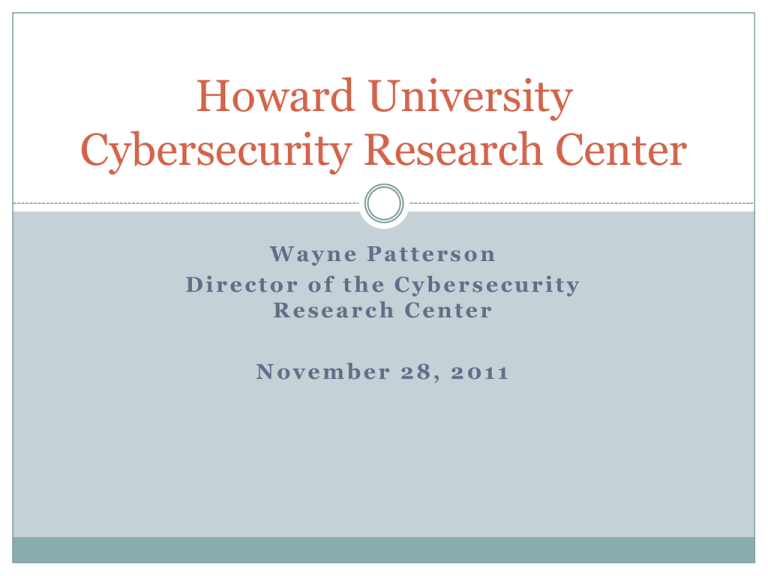
Howard University Cybersecurity Research Center Wayne Patterson Director of the Cybersecurity Research Center November 28, 2011 Designation as a National Center of Excellence In June of 2011, Howard University and its Cybersecurity Research Center were designated by the National Security Agency as a: Cemter of Academic Excellence in Informance Assurance Education Known as “CAE/IAE” Howard joins about 125 four-year institutions with this designation: see http://www.nsa.gov/ia/academic_outreach/nat_cae/institutions.shtml We will show what we had to demonstrate to gain this certification … and what this will mean for Howard Requirements to Meet We had to demonstrate our capability in: 1. Outreach/Collaboration 2. Center for Information Assurance (IA) Education 3. IA Academic Program is Robust and Active 4. IA as a Multidisciplinary Science 5. Practice of IA Throughout the University 6. Student-based IA Research 7. Number of IA Faculty and Course Load 8. Faculty Active in Current IA Practice and Research 1. Outreach/Collaboration a. Shared curriculum Created entire program at Voorhees b. Reciprocity of credits With 34 institutions, including 12 MSIs c. Sponsorship of workshops 4, two NSF-sponsored d. CAE Collaboration Seminars at George Mason and Stevens e. Community outreach 2. Center for IA Education a. Formal documentation of designation Created by Provost Wyche b. Hyperlink http://www.howard.edu/csl/index.htm c. Web site is operational, dynamic, current d. IA journals available online All ACM and IEEE available e. Physical and/or virtual IA labs available Mathematica, Sage, WebGoat, Java 3. IA Academic Program is Robust and Active Focus at the Bachelors level Concentration in MIS bachelor’s program (~6 yrs) Focus at the Masters’ level Graduate Certificate in Cybersecurity (7 yrs) Focus at the PhD level New PhD program in Computer Science approved 4. IA as a Multidisciplinary Science Modules in non-IA Courses International Studies, Law (2), Psych, Business (n) Non-IA Courses encourage papers Numerous referenced 5. Practice of IA Throughout the University University IA security plan Provided ISSO Provided Implementation of security plan http://www.howard.edu/policy/technology/computeruse.htm http://www.howard.edu/technology/faculty.htm http://www.howard.edu/technology/students.htm 6. Student-based IA Research a. Student papers, theses, dissertations, projects 19 provided b. List of courses that require such 5 provided 7. Number of IA Faculty and Course Load a. Full-time faculty with leadership responsibilities Two b. Additional full-time faculty with some IA Five c. Shared faculty Nine 8. Faculty Active in Current IA Practice and Research a. Peer reviewed publications 26 submitted b. Published books or chapters 4 submitted c. Grants/funding 13 submitted D. Active in professional societies Cyberwatch, ACM, IEEE E. Student IA programs One F. Present at major conferences 10 submitted What Will This Mean for Howard? Now eligible for certain scholarship programs NSF SFS, IASP, IA Capacity Building Collaboration urged with other CAEs Partnerships to date with Carnegie Mellon, George Mason, New Orleans, Stevens, Tennessee-Chattanooga, Texas – El Paso Helps in research proposal submissions Openings to national intelligence agencies NSA, DHS, DOD, NSF, …
